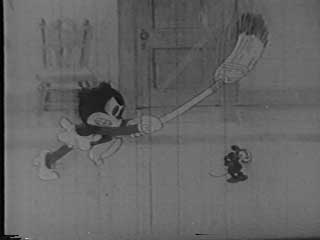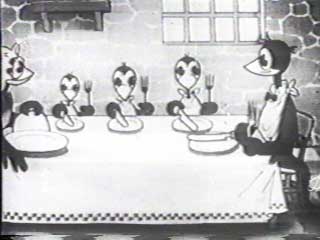
This page contains information about lost films written by Michigan animator/director Steve Stanchfield. Steve has a huge collection of 35mm and 16mm film, including the only known prints of several cartoons from yesteryear. These are some notes I requested from him about some of the cartoons he has:

Mendelssohn's Spring Song-1931- A "Jingles" cartoon (only one made) animated by (Sy) Cy Young and a handful of art students. Young went on to head the special Effects department at Walt Disney Studios, doing some amazing work on Snow White, Pinocchio, Dumbo and Bambi. Reportedly, this is the film that gave Disney the idea to hire Young. Animated in New York, it was the first animation experience for Lillian Freedman, who was the first woman to work as an animator in the Studio system, at Fleischers. Brewster color was a two-color process that was patented in 1931 but only used in a handful of cartoons. (perhaps this film was a test?) Young moved back to New York after the strike at Disneys, working on commercials. Shamus Culhane told a friend of mine (Les Brooks) that Cy changed his name to "SY" to protect his ethnicity (sy, after all, could be Sylvester!). Cy commited suicide in 1959. Transferred from the only known print.
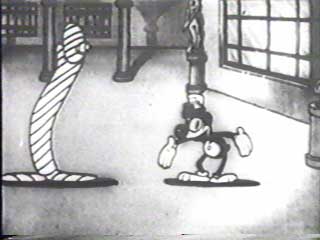
The Museum-1930- starring Toby the Pup- One of the few existing Toby the Pup cartoons (and incomplete at that). Made by Charles Mintz studio for Radio Pictures (RKO) and directed by Fleischer Vet Dick Huemer, who went on to direct the early Scrappy cartoons. Another Toby cartoon just turned up in a television package somewhere in the middle east!
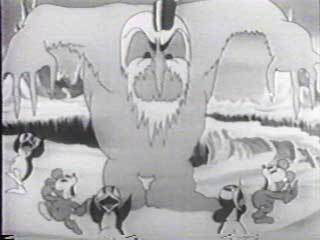
The Snowman-1932 (released 33) Produced by New York based Ted Eshbaugh productions and Released by Invincible Pictures (home movie /TV version released by Official Films). Cute 30's animals build a Snowman that comes to life and terrorizes them. Origially filmed in Two-Strip Technicolor (Eshbaugh financed these shorts by doing slides for the educational market). I almost have my paws on a 35mm nitrate Technicolor print of this thing....
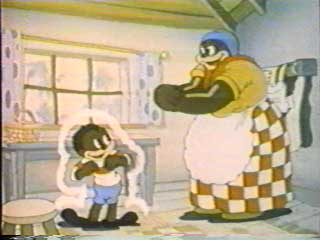
Little Black Sambo- 1935-UB Iwerks- design by Grim Natwick based on a children's book version) 2-color Cinecolor (need I say more?). Cinecolor was used in these cartoons because of Disney's exclusive deal with Technicolor (the ban was lifted in 1936- the year Iwerks folded)
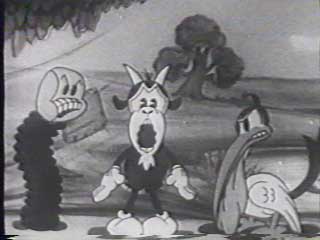
Goofy Goat Antics-1931- originally made in technicolor as well- some sources say this film was made in 1929- hard to believe. Eshbaugh had a deal with the originally based in New York Technicolor and it's possible this film was a kind of test for the two-color process (some sources say it was made for Technicolor).
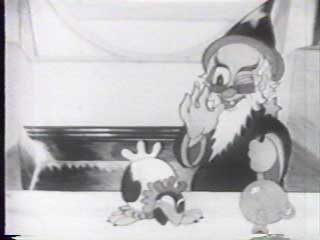
Wizard of OZ- Eshbaugh -1932/33- Another rare short by Eshbaugh- this was never released to theatres because of a legal problem with Frank Baum's estate (I couldn't find any record of legal action taken). Another source (late film historian Bill Everson,who worked with Eshbaugh in the 60's) said that Wizard was actually made in 3-strip Tech, but couldn't be released because of Disney's exclusive right to Technicolor). Strangely enough, Carl Stalling (who left Disney in Mid 32) did the score for this film!
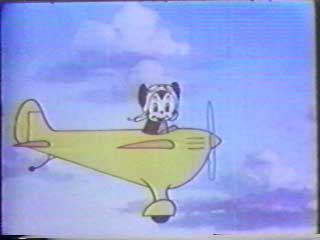
CAPN' CUB- 1944 (released in sept 45.. AFTER the war was over!!)- mind numbing propaganda, animated by Esbaugh and at least one former Fleischer employee....Beautiful Technicolor...
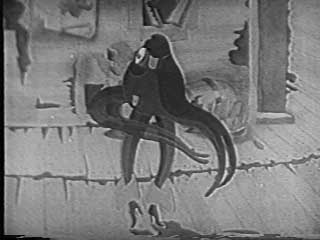
Undersea Wedding is the first Russian (Czech) fully animated cartoon. Made in color in 1945, it took over a year to complete. Obviously influenced by American shorts, the short also has rotoscoping and multiplane camera effects. Very impressive, eh? A little floaty. A friend of mine has it in color but STILL won't let me borrow it!! It has a hot spot in the middle of that print, though.. Official films released this and the second short from the studio as well ( I think it's called the grey donkey or something like that....
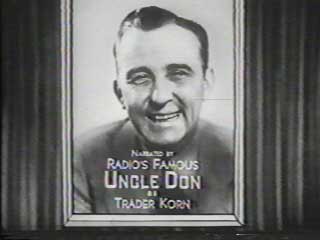
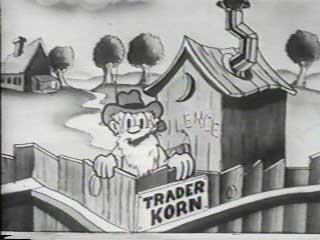
Korn Plastered In Africa is absolutely one of the strangest cartoons ever. Animated by "Scarfoot" (!) McCrorey (sp?), it stars the voice of Uncle Don, a popular childen's radio personality in New York. Uncle Don was supposedly fired for saying at the end of a broadcast "that oughtta take care of the little bastards for another week" not knowing the microphone was still on.... The thing really looks like it was made silent, or at least most of it... There's that really strange double exposed scene in the middle.. McCrorey was a spot cartoonist and work at Van Beuren at least for a little while. In the early/Mid 30's he wrote the Walter Foster "how to draw animated cartoon" book. It's still for sale; the author if officially listed as being WALTER FOSTER in the book, even with a mini- biography!! Someone who worked at Media Station had the 1930's version of the book, with proper credits...
Hey Steve, what's up with that "Mischevous Mice" Cubby Bear cartoon produced by Harman/Ising?
